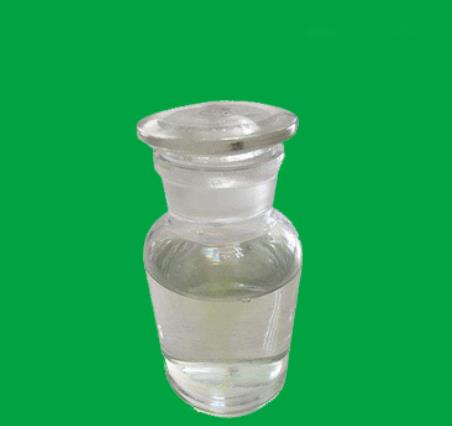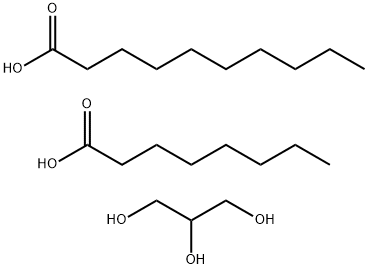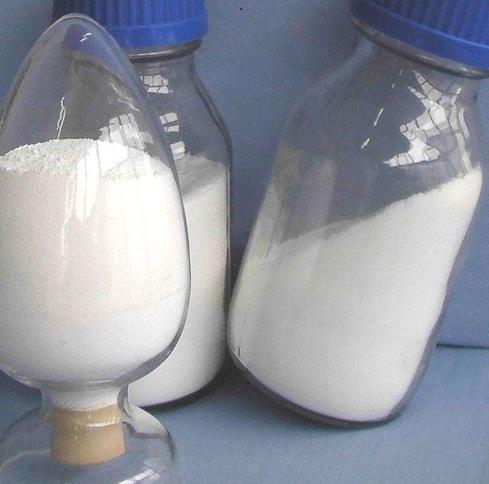Caprylic-Capric Triglyceride: A Versatile Ingredient in the Chemical Industry
Caprylic-capric triglyceride is a widely utilized compound in various industries, particularly in cosmetics, pharmaceuticals, and food production. Known for its exceptional stability and skin-conditioning properties, CAPRYLIC-CAPRIC TRIGLYCERIDE has become a staple ingredient due to its versatility and effectiveness.
Introduction
Caprylic-capric triglyceride is a medium-chain triglyceride (MCT) derived from the esterification of glycerol with caprylic (C8) and capric (C10) fatty acids. It is a colorless, odorless liquid that exhibits a light, non-greasy texture, making it highly desirable in formulations where smooth application and skin penetration are required. The compound is predominantly synthesized from coconut or palm kernel oil and is appreciated for its natural origin, which aligns with the growing consumer demand for eco-friendly and sustainable products.

Figure 1 Characteristics of Caprylic-capric triglyceride
Properties
The chemical and physical properties of caprylic-capric triglyceride are central to its functionality in various applications. This triglyceride exhibits excellent oxidative stability, which is crucial for the longevity and efficacy of the products in which it is used. Unlike long-chain triglycerides, CAPRYLIC-CAPRIC TRIGLYCERIDE does not easily oxidize, which prevents rancidity and prolongs shelf life.
Caprylic-capric triglyceride is also highly miscible with other lipophilic substances, enabling it to serve as an effective carrier or solvent for active ingredients, particularly in cosmetic and pharmaceutical formulations. Its non-polar nature allows it to blend seamlessly with essential oils, vitamins, and other lipid-soluble components, ensuring uniform distribution within a formulation.
Furthermore, CAPRYLIC-CAPRIC TRIGLYCERIDE is known for its emollient properties, which provide a silky and smooth feel upon application, without leaving a greasy residue. This characteristic makes it ideal for use in lotions, creams, and other topical products where a non-oily finish is preferred. Additionally, caprylic-capric triglyceride has a relatively low molecular weight, which enhances its ability to penetrate the skin, delivering active ingredients more effectively.
Main Components
The primary constituents of caprylic-capric triglyceride are the medium-chain fatty acids caprylic acid (C8) and capric acid (C10). These fatty acids are naturally present in coconut and palm kernel oils, from which they are extracted and then esterified with glycerol to form CAPRYLIC-CAPRIC TRIGLYCERIDE.
Caprylic acid, also known as octanoic acid, is an eight-carbon saturated fatty acid that contributes to the antimicrobial properties of CAPRYLIC-CAPRIC TRIGLYCERIDE. It is effective against a wide range of bacteria, fungi, and viruses, making it a valuable component in formulations designed for skin care and wound healing.
Capric acid, or decanoic acid, is a ten-carbon saturated fatty acid. Like caprylic acid, capric acid is known for its antimicrobial properties. In addition to its antimicrobial effects, capric acid also plays a role in stabilizing emulsions and enhancing the solubility of lipophilic ingredients.
The combination of these two fatty acids in caprylic-capric triglyceride results in a compound that not only provides excellent stability and texture but also enhances the bioavailability of active ingredients, making it an essential component in many cosmetic and pharmaceutical products.
Applications
Caprylic-capric triglyceride has a broad range of applications across several industries, thanks to its versatile properties.
Cosmetics and Personal Care:
In the cosmetics industry, CAPRYLIC-CAPRIC TRIGLYCERIDE is a popular ingredient in formulations for moisturizers, sunscreens, makeup, and hair care products. Its light texture, non-greasy feel, and ability to enhance the spreadability of products make it ideal for use in creams, lotions, and serums. Additionally, its emollient properties help to soften and smooth the skin, improving the overall feel of topical products.
Pharmaceuticals:
In pharmaceuticals, CAPRYLIC-CAPRIC TRIGLYCERIDE is often used as a carrier for active ingredients in topical ointments and creams. Its ability to improve the penetration of active compounds through the skin makes it particularly useful in transdermal drug delivery systems. Moreover, the antimicrobial properties of its constituent fatty acids contribute to the preservation of formulations, reducing the need for additional preservatives.
Food Industry:
Caprylic-capric triglyceride is also used in the food industry, primarily as a nutritional supplement. Medium-chain triglycerides like CAPRYLIC-CAPRIC TRIGLYCERIDE are rapidly metabolized by the body and are an excellent source of quick energy, making them popular among athletes and individuals following ketogenic diets. Additionally, CAPRYLIC-CAPRIC TRIGLYCERIDE is used as a carrier for fat-soluble vitamins and flavorings in various food products.
Industrial Applications:
Beyond its use in consumer products, CAPRYLIC-CAPRIC TRIGLYCERIDE is also employed in industrial applications. It is used as a plasticizer in the production of polymers and resins, where its non-toxicity and biodegradability are highly valued. Additionally, it serves as a lubricant in metalworking and as a component in the formulation of biodegradable cleaning products.
Storage and Handling
Proper storage and handling of caprylic-capric triglyceride are essential to maintaining its quality and effectiveness. CAPRYLIC-CAPRIC TRIGLYCERIDE should be stored in a cool, dry place, away from direct sunlight and sources of heat. Exposure to high temperatures or direct sunlight can accelerate the oxidation process, potentially leading to the degradation of the product.
CAPRYLIC-CAPRIC TRIGLYCERIDE is stable at room temperature and does not require refrigeration, which simplifies its storage requirements compared to some other lipid-based ingredients. However, it is important to ensure that the storage area is free from moisture, as CAPRYLIC-CAPRIC TRIGLYCERIDE can absorb water from the air, leading to hydrolysis and the breakdown of the triglyceride into free fatty acids and glycerol.
When handling caprylic-capric triglyceride, it is important to use clean and dry equipment to prevent contamination. Containers should be tightly sealed after use to minimize exposure to air and moisture. In industrial settings, the use of inert gases like nitrogen to blanket the product can further extend its shelf life by preventing oxidation.
References:
[1] B?HRLE-RAPP M. Caprylic/Capric Triglyceride.[C]. 1900. DOI:10.1007/978-3-540-71095-0\_1629.You may like
Lastest Price from Decanoyl/octanoyl-glycerides manufacturers

US $1.00/g2025-08-20
- CAS:
- 65381-09-1
- Min. Order:
- 1g
- Purity:
- 99%
- Supply Ability:
- 1000kg

US $0.00-0.00/kg2025-08-02
- CAS:
- 65381-09-1
- Min. Order:
- 25kg
- Purity:
- 98%min
- Supply Ability:
- 20 TONS


